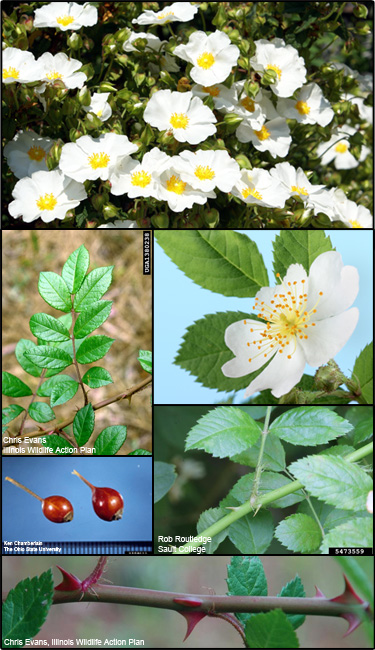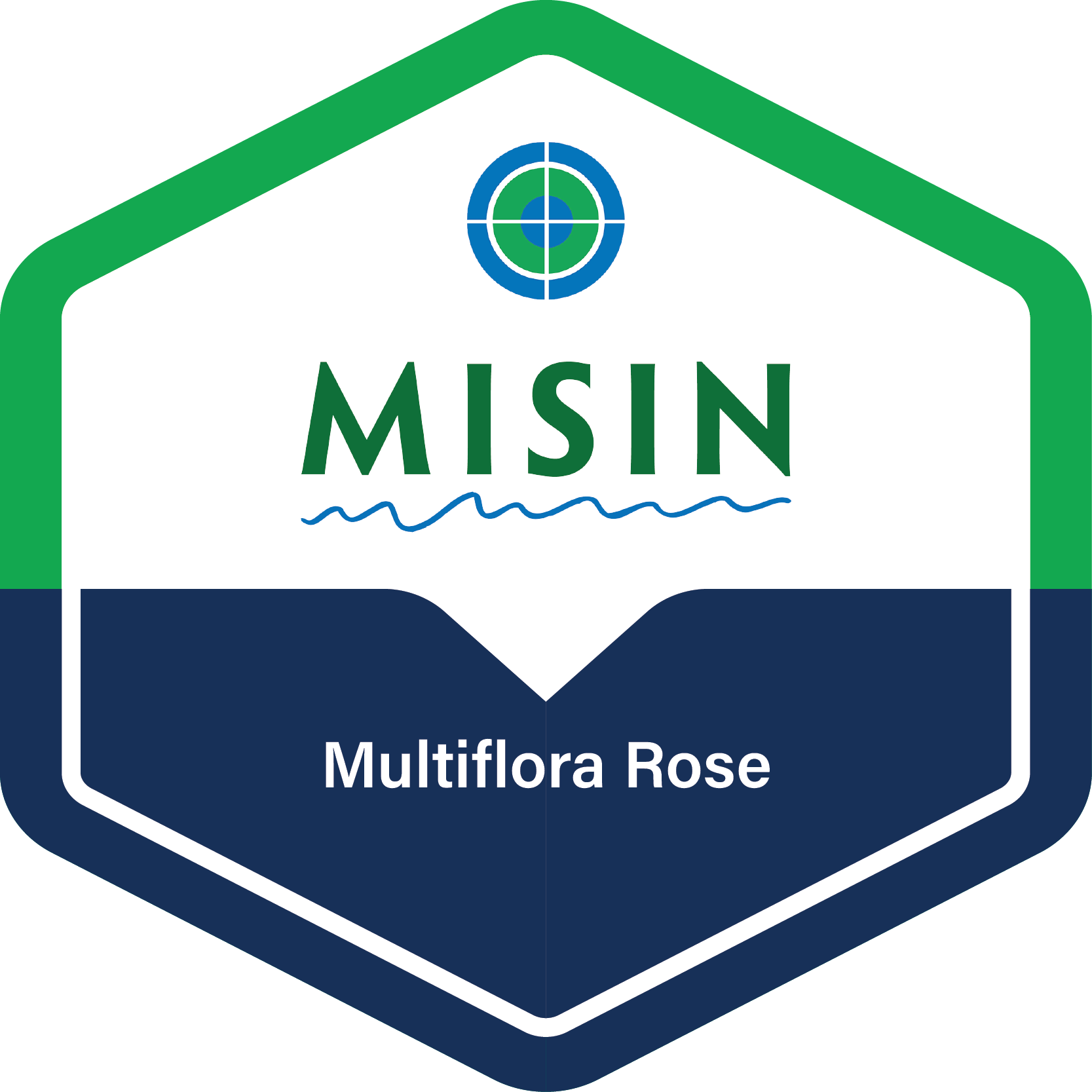Multiflora rose (Rosa multiflora)
 Common Names: Japanese rose
Common Names: Japanese roseDescription: Introduced from Japan and Korea in the 1800s; later promoted to control soil erosion, as a living fence and for wildlife food and cover until its invasive qualities became apparent; vulnerable to Japanese beetles and a number of other pests and diseases.
Habit: Deciduous; dense; perennial shrub growing up to 5 m (16 ft) tall and 3-4 m (9-23 ft) wide, with long, slender, arching branches.
Leaves: Alternate, pinnately compound with 5-11 leaflets, leaflets 2.5 cm (1 in) long and finely toothed, base of leaf with a finely fringed stipule.
Stems: Green-reddish; arching; rigid with recurved thorns.
Flowers: Numerous, white or slightly pink in color, 5 petals, up to 4 cm (1.5 in) wide, arranged in a panicle; bloom May through June.
Fruit and seeds: Fruits are small, clustered, hard, smooth, red rose hips that appear in September-October and last into winter; seeds yellowish and dispersed by birds and mammals, remain viable for 10-20 years.
Habitat: Found along roadsides, pastures, disturbed areas, forests and stream banks; tolerates a variety of soil conditions; prefers open, well-drained sites.
Reproduction: By seed. Also by horizontal stems that root at the node and shoots that root at the tips.
Similar species: Several native rose species; native roses usually have pink flowers and do not have fringed stipules.
Monitoring and rapid response: Monitor paths, edges and open areas. Dig out small plants and remove all roots; cutting or mowing several times throughout the growing season for several years may reduce populations; treat cut stems with herbicide for more effective control. Basal bark treatment effective - spray bottom 18 inches of all stems. Foliar herbicide treatment effective where few natives are present. In fire-adapted communities where good fuel is present, prescribed fire top kills well and facilitates follow-up with foliar herbicide treatment; repeated late spring fires with good fuels reduces population. Credits: The Michigan Natural Features Inventory (MNFI) has partnered with MISIN to provide the information in this fact sheet. Species images and/or information were used with permission from "A Field Identification Guide to Invasive Plants in Michigan's Natural Communities" and "A Field Guide to Invasive Plants of Aquatic and Wetland Habitats for Michigan.
Common Name: | Multiflora rose |
Scientific Name: | Rosa multiflora |
Family: | Rosaceae (Rose) |
Duration: | Perennial |
Habit: | Shrubs |
USDA Symbol: | ROMU |
 View Species Course |
|
